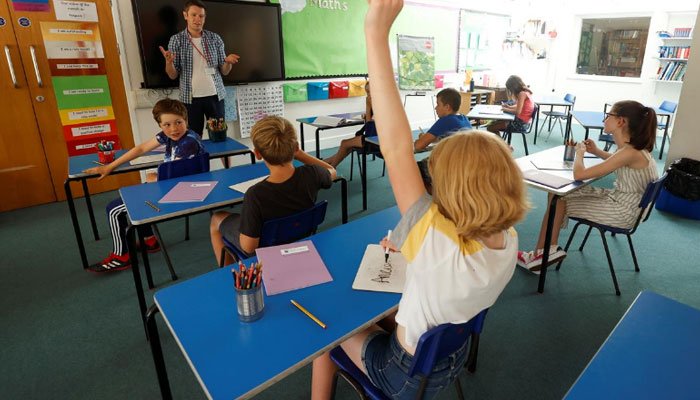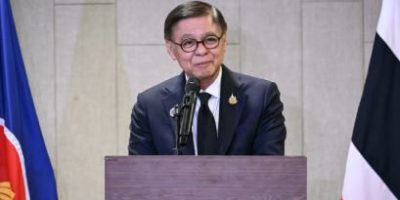What European schools are doing to curb spread of COVID-19

Schools across Europe are reopening as summer break ends and governments insist that students return to the classroom after months of online learning due to the covid-19.
Countries are taking different approaches to minimise contagion in schools, as outlined below.
UK
Primary schools reopened in England on June 1, starting with some year groups. Secondary school students aged 15 to 18 returned on June 15. All years are back full time for the new school year this week. Scotland’s schools reopened on August 11.
A recent survey of mostly English schools shows 96% of schools are splitting classes into small groups or ‘bubbles’, with each group keeping a safe distance from the other groups to minimise contagion risk. The vast majority plan to change break times and stagger start times, according to the survey by the National Association for Head Teachers.
Rules on face masks and other protective equipment differ: secondary students in England need only wear face masks in communal spaces if lockdowns are imposed in their areas. In Scotland, they will be compulsory when moving about school.
France
Schools reopen on September 1
Students aged over 11 years must wear face masks at all times, including indoors. Schools must limit the mixing of class groups, and ventilate and disinfect classrooms.
School attendance is mandatory, though schools can adapt to a surge in local coronavirus infections by, for example, limiting attendance for a few days or weeks. In the event of a major regional outbreak, schools can close temporarily.
In kindergarten, children within the same class group need not observe social distancing. Primary schools can split up classes into groups of 8 to 15 pupils who alternate between half-days in class and learning from home. At secondary schools, all students attend school at least a few days a week.
Germany
Children have been returning to school full time since early August. In most states, children and teachers have to wear masks indoors except when at their desks. North Rhine Westphalia dropped a rule that older students wear masks in lessons after criticism from parents and doctors.
Classes or year groups must keep to different parts of the school during breaks. Doors and windows are kept open as much as possible. Most teachers have returned to school, though campaigners are pushing for more protection for them. Some online lessons continue in special circumstances.
Greece
Schools are expected to reopen on September 7 but a delay may be deemed necessary.
Teachers and students will be required to wear masks in class and other indoor spaces, with each being given one fabric mask. Class sizes will be limited to 17 students.
Italy
Schools in most regions are set to reopen on September 14. Measures to minimise contagion are still being finalised.
To aid social distancing, entry times will be slightly staggered and new, single desks will be introduced in the coming weeks. Mask wearing will be obligatory for those arriving and leaving school, but they can be removed during lessons if there is a safe distance between desks.
Some secondary schools with larger class sizes say they will use a mix of distance learning and on-site teaching to prevent overcrowding. The government has agreed to provide more funds to increase public transport to allow for safe travel to schools.
If a student or teacher is infected, it will be up to head teachers and health authorities to decide whether to shut down whole schools, single classes or impose quarantine on those directly involved.
The Netherlands
Dutch elementary and high schools began reopening in stages in August, as normal.
Primary and high school classes are conducted face-to-face. Neither students nor teachers are required to wear face masks. Some teachers have been reluctant to return to work and a number of schools introduced their own mask requirements.
If a student is infected, everyone in his or her household must stay home for 10 days. Children aged above six years who show symptoms must stay home and get tested; younger pupils may attend school and day-care even with mild cold symptoms, but must stay home if they have a fever.
Norway
Schools reopened gradually from April 27.
Children are not required to wear face masks and school hours remain largely unchanged.
Online learning is no longer an option. Classmates stick together and do not mix at school with members of other cohorts. During breaks, each class is assigned a different area of the playground. Break times are also staggered. Children with symptoms must stay home and be tested for COVID infection. In kindergartens, children can attend even if they have a sniffle but must stay home if symptoms.
Poland
Schools reopen September 1
Face masks are not compulsory in class. Headmasters decide on use of masks in common areas and on whether to stagger school hours. Requests by some schools and municipalities to delay school reopenings have been declined. Primary and high schools in cities such as Warsaw are crowded and some educators say it will be impossible to respect social distancing rules even with staggered hours. Families who decline to send their children to school may face a fine of up to 10,000 zlotys ($2,710).
Russia
Schools reopen on September 1.
Classroom times and breaks will be staggered to prevent overcrowding in common areas. Temperature checks are carried out at school. Students with flu-like symptoms are isolated. Children are advised to wear masks but it is not compulsory. Staff are expected to wear masks all the times unless explaining new material or standing at a safe distance from students.
Online education will not be offered as an alternative.
Spain
Primary and secondary schools start the academic year across the regions in the first three weeks of September.
School attendance is mandatory, as are face masks in class for children aged six and over. Students must wash their hands at least five times a day. Social distancing must be observed, except among members of a “bubble”, a small group of children who must distance from members of other bubbles. Temperature checks are carried out each morning, at school or at home.
Sweden
Swedish schools stayed open throughout the pandemic and welcomed students back in mid-August after the summer break. Local authorities decide how to handle possible outbreaks, including the option of closing individual schools.
Each school is responsible for following guidelines on social distancing and hygiene. Masks are not mandatory.
Some municipalities changed school schedules to avoid crowding on public transport. Keeping schools open in spring did not lead to higher infection rates among students compared with neighbouring Finland where schools temporarily closed, according to a joint report by the two countries’ public health agencies.
Related News

Turkish Vice President Cevdet Yilmaz pays tribute to Azerbaijani martyrs in Baku
BAKU, Dec 22 – A Turkish delegation led by Vice President Cevdet Yilmaz visited theRead More

Thailand says Cambodia agrees to border talks after ASEAN meet
KUALA LUMPUR, DEC 22 – Thailand’s top diplomat said on Monday that Cambodia had agreedRead More


Comments are Closed